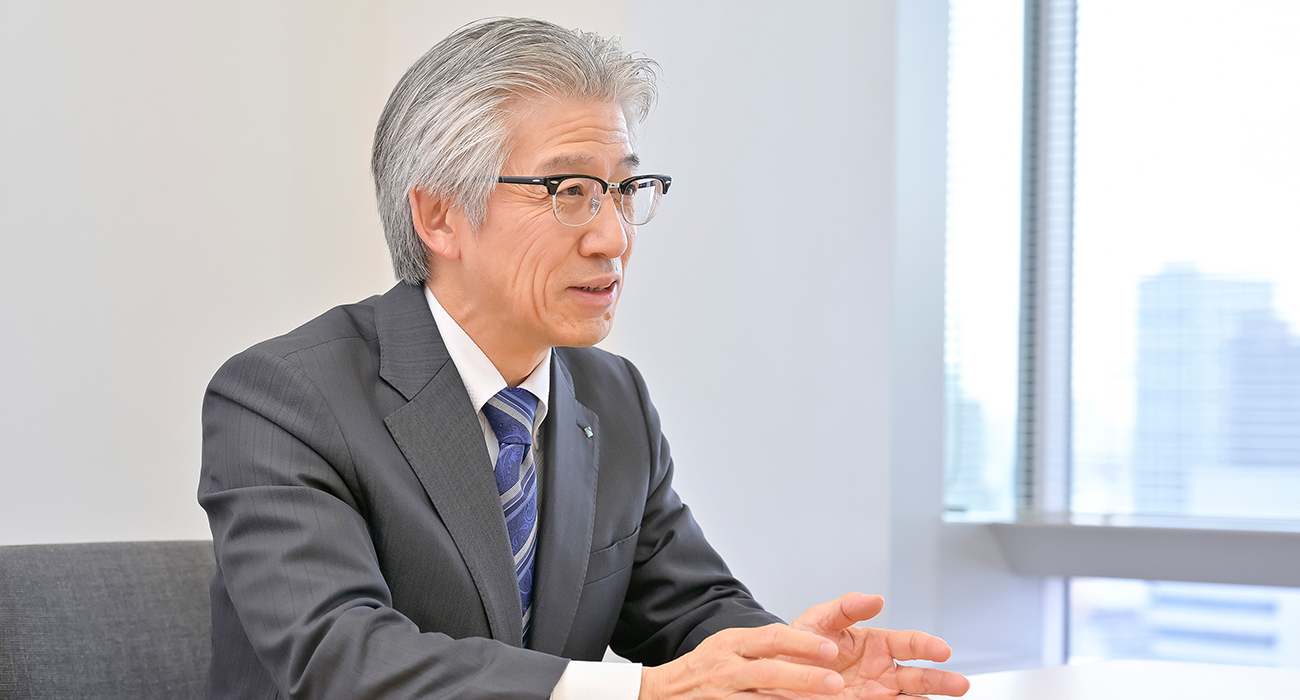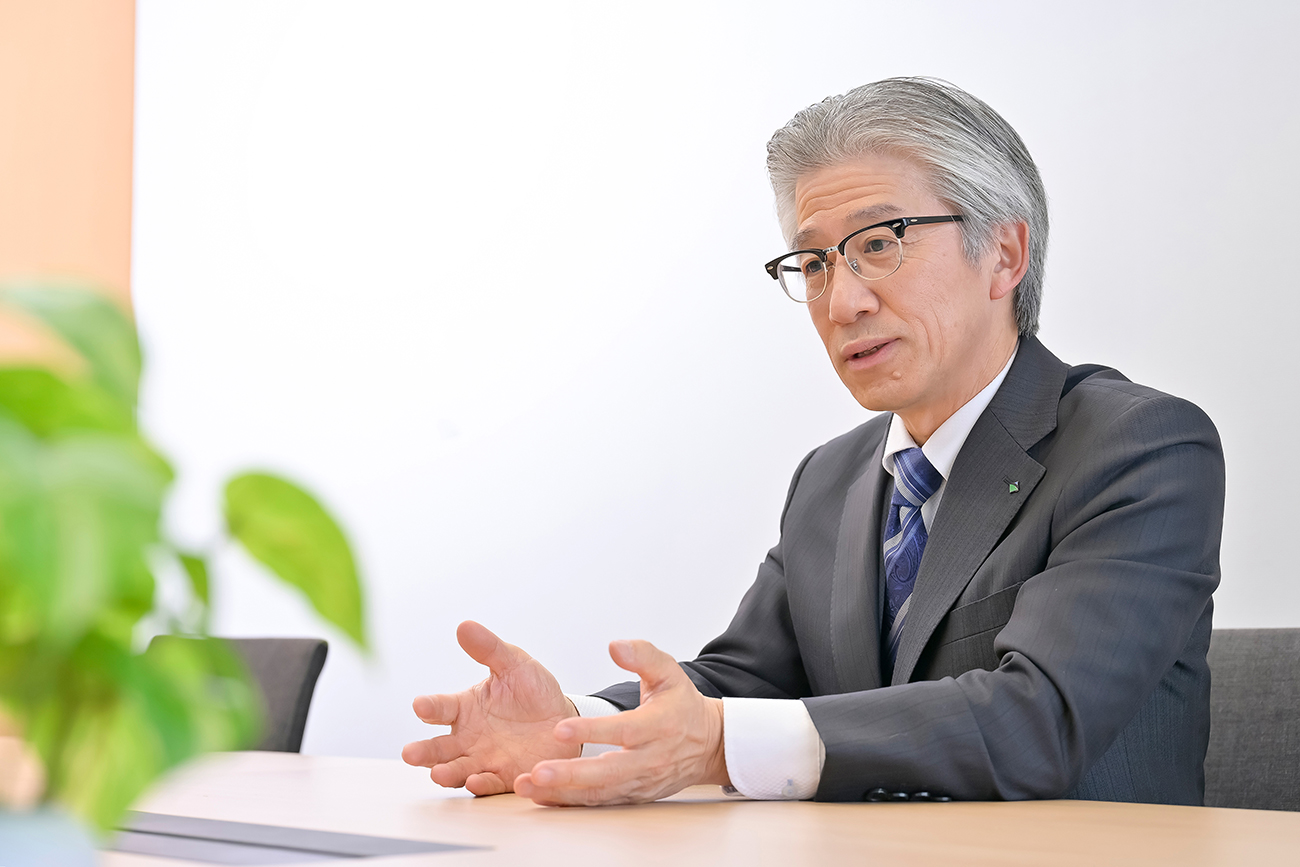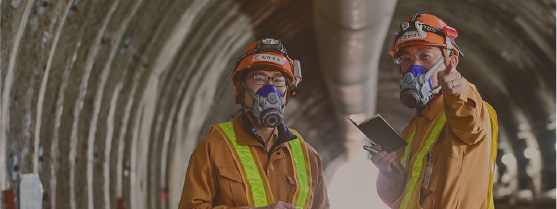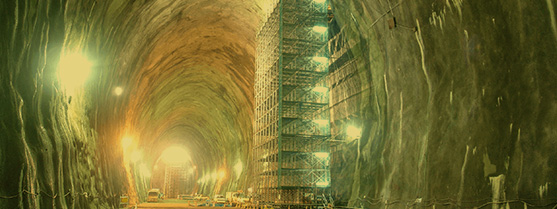
Tunnel Construction Professionals
Conventional Tunneling

General Manager, Tunnel Engineering Department, Civil Engineering Technology Division, Obayashi Corporation Takashi GOTO
“Incorporating advanced technology while taking advantage of people’s experience”
Mountain tunnel construction today
Digging a hole in a mountain and supporting the excavated rock mass with materials like concrete and rock bolts ― that is how mountain tunnels are made. The method, called NATM (New Austrian Tunneling Method), has been introduced to Japan about 50 years ago, and it has become almost an established method. There have been some changes, such as the use of ICT and the response to larger projects, but no major technological innovation, and construction has been carried out in basically the same way up to the present.
Making up for labor shortages with technology
Though it is not limited to the construction industry, we have been recently facing a major issue in terms of lack of human resources in our department as well. Since mountain tunneling is a highly specialized construction, it is crucial to pass on the skills and techniques to future generations. But there is a decrease in the number of young workers to take over the skills, and also a decrease in the number of veteran site workers who can pass on skills. Meanwhile, ICT is advancing, providing new machines and a large amount of various data during construction, but the shortage of personnel who utilize them is a pressing issue.
At construction sites in general, remote control and automation are increasingly adopted, and unmanned construction is now within reach. In the future, we can expect machines to become autonomous, carrying out construction work on their own. To keep up with this trend, we need to introduce AI and other cutting-edge technologies in the field of mountain tunnels, too.

Safety as the top priority
Among the various types of construction work, mountain tunneling is comparatively high-risk since it involves working directly below the face at the end of the tunnel being excavated. The fundamental measure to be taken to ensure safety is, above all, the elimination of potential danger. Our mission is to eliminate disasters at mountain tunnel face, and we are developing machines that can be operated remotely from a safer location, even at the sites.
Balancing technological development with personnel development
Remote control and unmanned construction are attractive technologies, ensuring safety and resolving labor shortages, but special circumstances in mountain tunneling make it impossible to rely solely on these technologies.
Japan has many volcanoes and frequent earthquakes, and the geology of tunnel construction sites is complex, with the conditions of the face changing on a daily basis. No two construction sites are the same, meaning all involved experience everything there for the first time. An unexpected accident mandates quick decision-making of veteran employees and experienced site workers.
Application of remote-control construction enables work to be performed from outside the tunnel or from a remote office or other location. However, when an unforeseen situation arises on site, the people in charge must rush there, assess the situation and quickly make appropriate decisions.
Given these circumstances, we need to strike a balance between “development of labor-saving technology” and “development of personnel with a wealth of on-site experience.”

Mutual growth with other departments and colleagues
In mountain tunneling, it is impossible to proceed with work within one division, and in many aspects, cooperation from other divisions is necessary. This is a feature not seen in other types of construction.
Also, tunnels are rarely constructed solely, and are often built with other structures at the same time. We work with various divisions such as the Construction Robotics Division and the Advanced Technology Development Office, which utilizes ICT and other technologies, the Technical Research Institute which has geological knowledge and expertise in concrete, and other departments of the Civil Engineering Technology Division.
In addition, we frequently interact with experts outside the company, including those at Keio University, to collaborate in developing new technologies and apply them to tunneling.
Also, there is a network among people who go to various parts of Japan to work on tunneling projects. Even without meeting each other in person, they have a strong sense of camaraderie and consult each other when in trouble. The custom of friendly rivalry among each other, including those at partner companies, is deeply rooted, and seen in different occasions such as at study sessions on newly introduced construction machinery.


